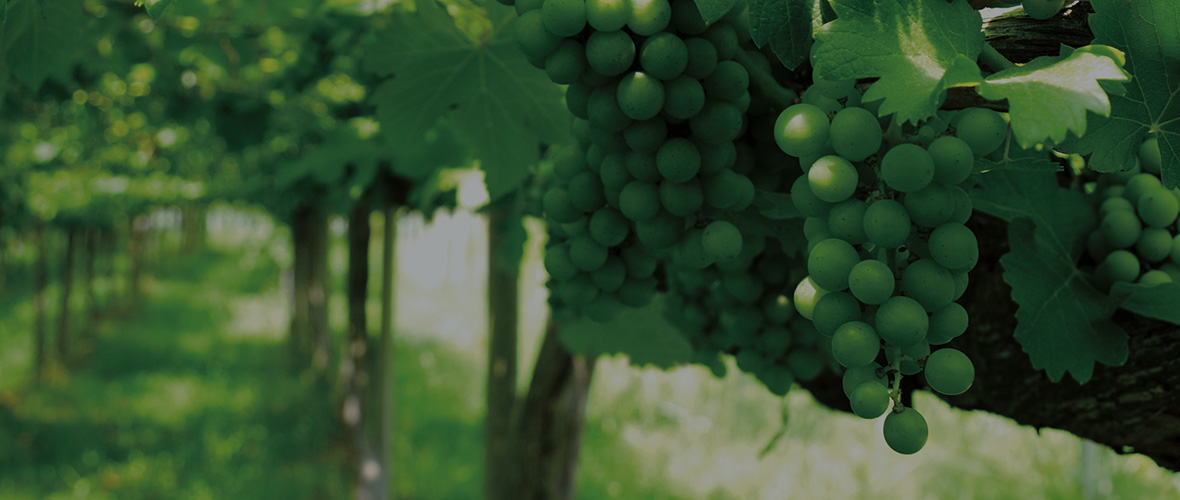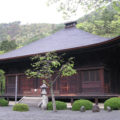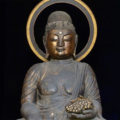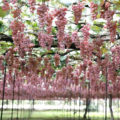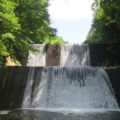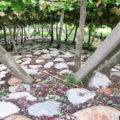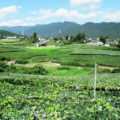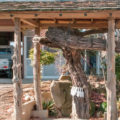Story1. The formation of the vineyard
The Kofu Basin Eastern Katsunuma district has long been used for grape cultivation and it is an area of traditions in connection to grapes. In the dream of Gyoki, a famous monk from the Nara period, a Medicine Buddha appeared with grapes in his hands, which can be seen on one of the statues at Daizenji Temple (Budoji Temple). This area was taught about grape cultivation, leading to the Koshu grape that is used in Koshu wine.
In the Edo period, grapes were cultivated along trellises using bamboo, which later became known as the Koshu method. Originally, grapes were preferred dried, so cultivation using trellises was suited for growth because of the plentiful ventilation, which became the standard method of grape cultivation in Japan.
Later, instead of bamboo, wire, which could be produced as needed, was used from the middle of the Meiji period. This allowed trellises to be formed in any terrain, and bunches of colored grapes between leaves growing in the shape of a roof and hanging like chandeliers could be seen spreading across the hills.
In this district, the Hikawa River, which flows from across this area, frequently floods, washing away homes and fields, so facilities such as flood control made of stone and upstream sand banks were built at the end of the Meiji era in order to prevent sediment discharge.
As a result, river flooding was controlled, and the paddy fields along the Hikawa River became well-drained sandy soil, which were converted to vineyards. Even today, among the vineyards along Hikawa River, some of the unused flood control facilities are utilized as heavily-lined stone paving.

